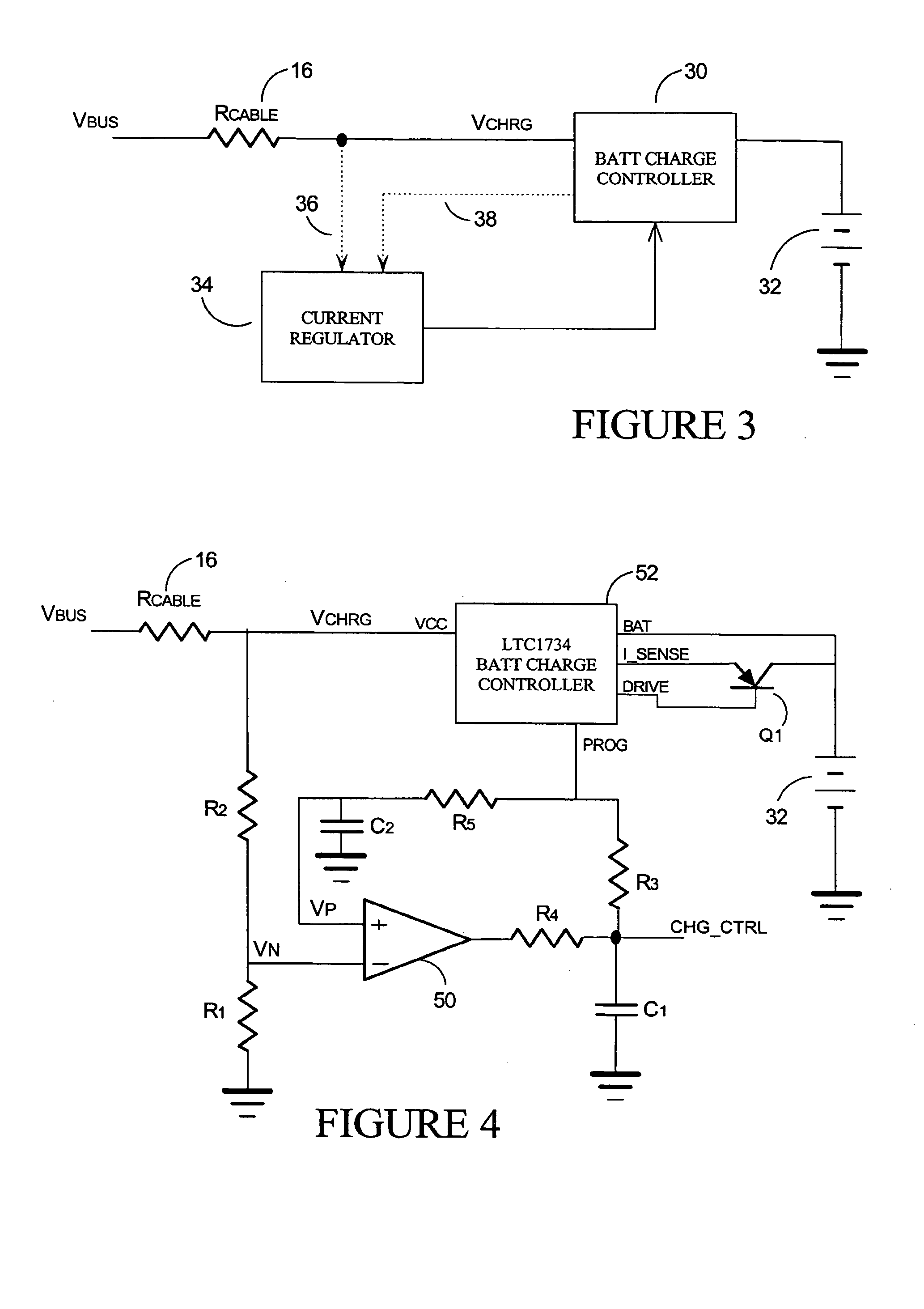Circuit and method of operation for an adaptive charge rate power supply
a technology of charge rate and power supply, applied in the direction of liquid/fluent solid measurement, instruments, transportation and packaging, etc., can solve the problems of limited capacity, inability to find a replacement, aggravating the problem, etc., to minimize charge time, minimize charge time, and maximize current drawn
- Summary
- Abstract
- Description
- Claims
- Application Information
AI Technical Summary
Benefits of technology
Problems solved by technology
Method used
Image
Examples
comparator embodiment
FIG. 4 presents an electrical schematic diagram charging circuit which employs two main components: a comparator 50 and a LTC1734 battery charge controller 52 having a current control pin PROG. Varying the current drawn through the control pin PROG will vary the current supplied by the LTC1734 battery charge controller 52 to the battery 32. Drawing more current out of the PROG pin will increase the charge current, while reducing the PROG current will reduce the charge current.
Many battery charge controllers have a similar current control system, but this embodiment will be described with respect to the LTC1734 controller. The LTC1734 controller can be operated in either constant current mode, or constant voltage mode.
In the constant voltage mode (entered when the charge voltage of the battery 32 reaches 4.2 VDC externally), the LTC1734 controller 52 servos its DRIVE pin to maintain its BAT pin at 4.2 VDC. In this mode, the current provided by the LTC1734 controller 52 will neces...
embodiment
Digital Potentiometer Embodiment
The invention is not strictly limited to the case where the low voltage threshold is never exceeded. In the embodiment of FIGS. 5 and 6, for example, the low voltage threshold could be exceed with each periodic cycle of current ramping, but the duty cycle still be sufficient to charge the battery. The only difficulty with such a circuit is that it would be necessary to reset the battery charge controller with each cycle. The circuit of FIGS. 5 and 6 ramps through a range of current supply, but uses a reset circuit to stop the ramping before the low voltage threshold is exceeded.
Like the embodiment of FIG. 4, this circuit uses the LTC1734 battery charge controller 52, though other battery charge controllers having a current control pin PROG could also be used. However, rather than having a comparator circuit as in FIG. 4 which modulates the current draw to avoid the low voltage shut off, this circuit ramps from a low current level, through to a high...
PUM
 Login to View More
Login to View More Abstract
Description
Claims
Application Information
 Login to View More
Login to View More - R&D
- Intellectual Property
- Life Sciences
- Materials
- Tech Scout
- Unparalleled Data Quality
- Higher Quality Content
- 60% Fewer Hallucinations
Browse by: Latest US Patents, China's latest patents, Technical Efficacy Thesaurus, Application Domain, Technology Topic, Popular Technical Reports.
© 2025 PatSnap. All rights reserved.Legal|Privacy policy|Modern Slavery Act Transparency Statement|Sitemap|About US| Contact US: help@patsnap.com



